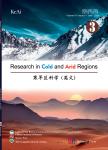Effects of freeze-thaw cycle and dry-wet alternation on slope stability
Effects of freeze-thaw cycle and dry-wet alternation on slope stability作者机构:School of Civil Engineering Lanzhou University of Technology Jiangsu JiaoTong Traffic Design Research Institute Co. Ltd.
出 版 物:《Research in Cold and Arid Regions》 (寒旱区科学(英文版))
年 卷 期:2019年第11卷第2期
页 面:159-172页
核心收录:
基 金:supported by the National Natural Science Foundation of China (Grant No. 51769013)
主 题:freeze-thaw action dry-wet alternation temperature field seepage field slope stability
摘 要:The typical loess on high slopes along the BaoLan High-speed Rail, China, was selected as the research object. The influence of the freeze-thaw cycle and dry-wet alternation on the shear-strength parameters of the unsaturated loess was investigated by laboratory experimental methods. Moreover, the temperature field, seepage field, and stability of slopes with different gradients were simulated under the effect of the freeze-thaw cycle and dry-wet alternation by using the geotechnical analysis software Geo-Studio. The research results showed(1) when the freeze-thaw cycle was repeated on the slope, with the frozen depth increasing, the melted depth did the same; besides, the closed loop of isotherms formed on the slope;(2) under the action of dry-wet circulation, the negative pore-water pressure and volumetric water content showed an upward tendency. However, owing to the different slope gradients, rainfall infiltration was not the same. As time went by, the differences of the negative pore-water pressure and volumetric water content between the slopes of different gradients continued to increase;(3) with the freeze-thaw cycle and dry-wet alternation increasing, the slope-safety factor decreased. Especially in the early period, the slope-safety factor changed remarkably. For slopes undergoing freeze-thaw action, the slope-safety factor was negatively correlated with the gradient. However, with regard to slopes undergoing dry-wet alternation, the result became more complex because the slope-safety factor was related to both seepage strength and slope grade. Accordingly, further research is needed to study the effect of seepage strength and slope grade on the stability of loess slopes.



